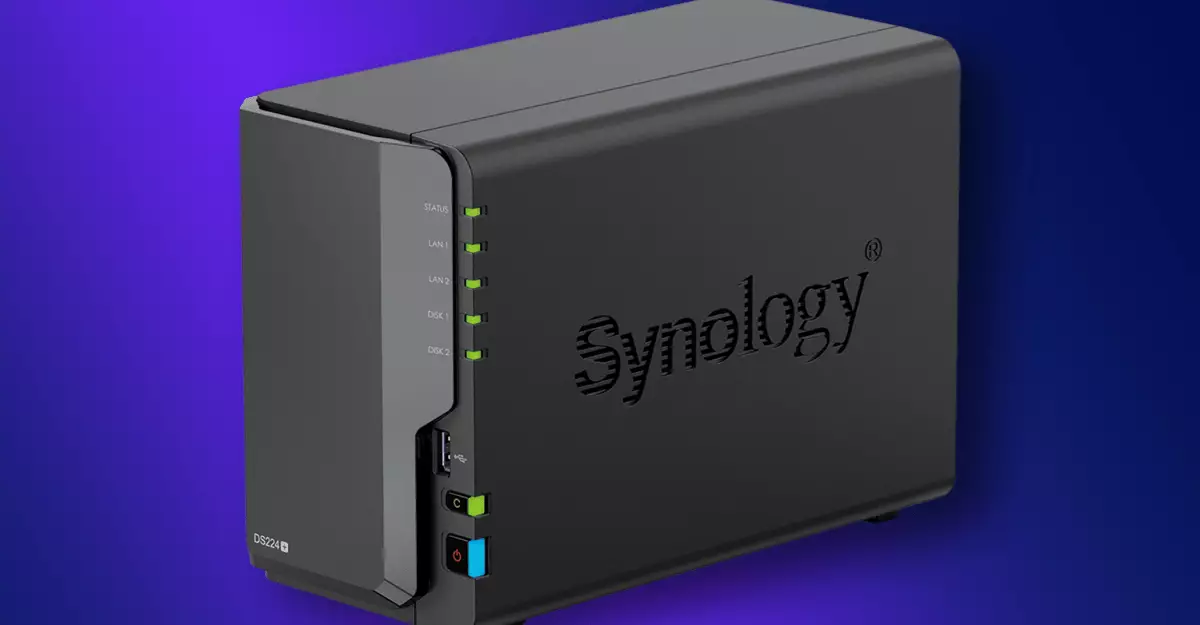In an era where consumer choice is paramount, Synology’s recent announcement regarding new restrictions on third-party hard drives for its upcoming network-attached storage (NAS) models raises eyebrows and sparks debate. While existing users of Synology devices can breathe a sigh of relief, knowing their current systems will not be subjected to these restrictions, the impending changes signal a notable shift in the landscape of storage solutions. As technology evolves, manufacturers are often caught in a tug-of-war between ensuring system compatibility and offering consumers flexibility. Synology’s decision suggests a pivot towards a more controlled ecosystem, promoting their own products at the potential expense of user choice.
Understanding the Implications
According to the company’s announcement, starting in 2025 with the release of the Plus Series models, only Synology-branded and rigorously certified third-party drives will deliver the full range of features and support. This means users who opt for non-certified drives may find themselves facing significant limitations, such as the inability to pool storage among disks or to utilize the company’s sophisticated drive lifespan analysis. These features, which formerly enhanced the NAS experience, are now tied to proprietary hardware, potentially alienating users who prefer to mix and match components based on their unique needs.
While Synology justifies this move by citing extensive internal testing that points to lower risks of drive failure with certified products, the reality is that consumers may feel extorted into purchasing specific brands to retain functionality. This raises ethical concerns about the monopolization of hardware components, creating a potential scenario where Synology prioritizes profit margins over consumer satisfaction.
The Silver Lining for Existing Users
For those already invested in Synology’s ecosystem, the relief is palpable. The announcement explicitly states that the changes will not affect devices released in 2024 and prior. This move undoubtedly spares thousands of users from the immediate pressure to upgrade their storage solutions. However, the question remains—how long will this reprieve last? As technology progresses and hardware becomes outdated, consumers who have made significant investments in previous models might find themselves compelled to eventually transition to the new system, facing the fresh limitations that come with it.
Compared to what we’ve seen from other tech companies that impose sudden restrictions through firmware updates—think printer manufacturers locking out third-party ink—Synology’s approach is less militant. Yet, it brings its own set of frustrations. Users expect an open platform where they can customize their setups based on budget and performance needs, rather than being bound by the barriers of proprietary hardware ecosystems.
Will Innovation Be Stifled?
This move could inadvertently stifle innovation within the storage market. By creating an environment where consumers are nudged towards a single path of buying compatible drives, the variety in offerings may dwindle. This speaks to a broader issue within the tech industry—when companies prioritize lock-in strategies, they potentially hinder the surge of creativity that competition typically fosters.
If Synology’s lab-tested claims stand true—that certified drives offer superior compatibility and reliability—then one might question why various manufacturers, including third parties, aren’t invited to close the gaps through collaboration. It seems counterproductive for a company to restrict options when the market thrives on diversity; after all, technological growth often arises from challenging accepted norms and experimenting with different configurations.
The Broader Market Response
Consumer reaction is already brewing, and tech enthusiasts are voicing their concerns across forums and social media. Critics argue that while Synology’s intentions may be rooted in performance optimization, the move feels like a hedge against competition. Instead of fostering a healthy market where users can elect their storage configurations, this decision tightens the grip of an emerging standard that may come to dominate; with it, the risk is that user interests become secondary to corporate profit.
As the new policies roll out, it is essential to monitor how consumers adapt to them. Will they embrace Synology’s certified offerings, or will this lead to an increasing demand for brands that provide the freedom to mix and match? The fallout from this decision will ripple through the industry, ideas about consumer choice and market integrity will continue to flourish, forcing manufacturers to reconsider how best to balance innovation with buyer freedom. The stakes are high, and only time will reveal the true impact of Synology’s bold new direction for NAS solutions.


Leave a Reply